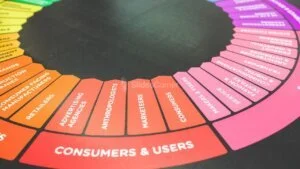Discover indispensable strategies to craft conference presentations that captivate and resonate with your audience.
In the realm of professional communication, conference presentations stand as vital tools for disseminating knowledge and fostering connections. To make a lasting impact, it’s essential to master the art of creating an effective presentation that resonates with your audience. This guide unveils key strategies to ensure your conference presentation becomes a memorable experience for your attendees.
1. Understanding Your Audience: The Foundation of Success
Before even delving into your presentation’s content, take the time to understand your audience. Are they industry experts seeking in-depth analysis, or newcomers hoping for a broad overview? Knowing your audience’s expectations, familiarity with the subject, and interests enables you to tailor your content for maximum engagement.
Before you even begin creating your slides, take the time to research your audience’s interests, knowledge level, and expectations. ailoring your content to their needs ensures that you strike a chord and maintain their attention throughout your presentation.
2. Streamlining Your Message: One Point, One Slide
Simplicity is the key to conveying complex ideas. Each slide should center around a single main point. Avoid overcrowding slides with too much text or multiple ideas. By focusing on one clear message per slide, you allow your audience to grasp and absorb information more effectively.
Cluttered slides overloaded with information can overwhelm your audience and lead to disengagement. To keep your presentation focused and effective, adhere to the “one point per slide” rule. This approach not only aids understanding but also allows you to pace your presentation effectively.

3. Show, Don’t Just Tell: Visuals that Speak
Visuals are potent tools that transcend language barriers and captivate attention. Rather than overwhelming your audience with blocks of text, utilize images, graphs, and diagrams to illustrate your points. A compelling image can evoke emotions and enhance understanding, creating a deeper connection between your audience and your content.
Engagement flourishes when your audience experiences your content rather than passively receiving it. Instead of inundating your slides with text-heavy bullet points, strive to show your message through vivid visuals, anecdotes, and real-life examples. Incorporate storytelling techniques to create a narrative that resonates with your audience on an emotional level. By immersing them in your content, you forge a stronger connection and make your presentation more memorable.
4. Crafting Captivating Text: Making Words Leap
The text you use should be concise, impactful, and easily readable. Opt for bold headlines, bullet points, and short sentences that convey your message succinctly. Utilize contrasting colors to make text pop against the background, ensuring that even those at the back of the room can read with ease.
Choose fonts that are legible even from a distance, and use contrasting colors. Embrace techniques such as bolding, italics, and underlining to emphasize key points. Keep your sentences concise, focusing on delivering punchy statements that encapsulate the essence of your message. Remember, less is often more in the world of presentation text.
5. The Power of Visuals: A Picture’s Worth
As the saying goes, a picture is worth a thousand words. Incorporate relevant images that amplify your message. Visual metaphors and analogies can help explain complex concepts in a digestible manner. Remember to use high-resolution images to maintain a professional look.
Visuals are a potent tool in capturing and retaining your audience’s attention. A well-chosen image can convey complex concepts in an instant and evoke emotions that words alone might struggle to elicit. When selecting images, opt for high-quality, relevant visuals that complement your content. Infographics, charts, and diagrams are excellent for simplifying complex data, while compelling photographs and illustrations can create an emotional connection with your audience.
6. Consistency and Completeness: A Unified Experience
Maintaining a consistent design throughout your presentation enhances professionalism and aids comprehension. Use a cohesive color scheme, typography, and layout for all slides. Additionally, ensure your content is complete – each slide should contribute to the overall narrative, leaving no gaps in understanding.
Consistency in design and content is crucial for a polished and professional presentation. Choose a cohesive color scheme, font style, and layout that align with your branding and the tone of your message. Ensure that your slides flow seamlessly from one to the next, creating a logical progression of ideas. Additionally, strive to provide a complete narrative by addressing potential questions or counterarguments your audience might have. A thorough and well-rounded presentation leaves a lasting impression of competence and expertise.
7. Leveraging Conference Templates: Your Shortcut to Success
Designing a visually appealing presentation from scratch can be time-consuming. Consider utilizing conference presentation templates tailored to your field. These templates often include pre-designed layouts, fonts, and color palettes, saving you time and ensuring a polished look.
In conclusion, an effective conference presentation is a delicate blend of understanding your audience, concise content, impactful visuals, and consistent design. By adhering to these principles, you’ll craft a presentation that not only informs but captivates, leaving your audience inspired and eager for more. Remember, a successful presentation isn’t just about the information you share – it’s about the lasting impression you leave.






